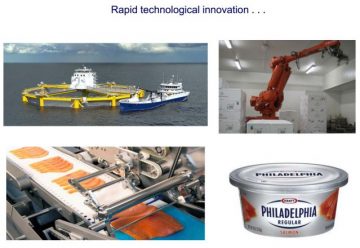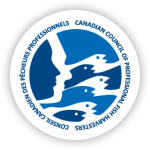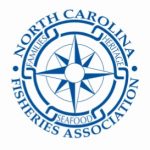Tag Archives: aquaculture
Trump Fisheries Order May Be A First Step Toward Global Reforms
 The American fisheries sector is the beneficiary of an April 17 Trump executive order. The order’s implementation could result in reduced regulatory burdens and a procompetitive, economically efficient expansions of U.S. fisheries output. It might also inspire U.S. consideration of additional efforts to improve global fisheries management. Overregulation is a serious problem afflicting U.S. fisheries. While federal regulations are designed to promote sustainable fishing and protect marine ecosystems, some badly designed rules impose economic harm on fishermen and communities that rely on fishing. These regulatory design flaws can generate excessive costs and job losses in the American fishing industry. In sum, the Fisheries Order may prove to be a catalyst not just for strengthening the U.S. fisheries sector, but also for market-oriented changes that improve global fisheries. more, >>CLICK TO READ<< 08:30
The American fisheries sector is the beneficiary of an April 17 Trump executive order. The order’s implementation could result in reduced regulatory burdens and a procompetitive, economically efficient expansions of U.S. fisheries output. It might also inspire U.S. consideration of additional efforts to improve global fisheries management. Overregulation is a serious problem afflicting U.S. fisheries. While federal regulations are designed to promote sustainable fishing and protect marine ecosystems, some badly designed rules impose economic harm on fishermen and communities that rely on fishing. These regulatory design flaws can generate excessive costs and job losses in the American fishing industry. In sum, the Fisheries Order may prove to be a catalyst not just for strengthening the U.S. fisheries sector, but also for market-oriented changes that improve global fisheries. more, >>CLICK TO READ<< 08:30
Suffolk Bill Aims to Protect Commercial Fishing Industry
 The Suffolk County Legislature is considering a bill that, it says, will help commercial fishermen. The bill, now in committee, will allow property owners of commercial fishing businesses to apply for a conservation easement that would restrict future development. The bill was supposed to come to a vote late in 2024 but is now being studied to broaden its scope. The bill did receive positive support at a public hearing in November before the full legislature. Earlier in 2024, Suffolk County Executive Edward P. Romaine signed legislation increasing spending for farmland preservation to $15 million annually. He said the commercial fishing industry needed support as well. According to the legislation, any type of business that contributes to working waterfronts, such as gear storage, aquaculture, docks, boat repairs, could benefit from the pending legislation. more, >>CLICK TO READ<< 06:50
The Suffolk County Legislature is considering a bill that, it says, will help commercial fishermen. The bill, now in committee, will allow property owners of commercial fishing businesses to apply for a conservation easement that would restrict future development. The bill was supposed to come to a vote late in 2024 but is now being studied to broaden its scope. The bill did receive positive support at a public hearing in November before the full legislature. Earlier in 2024, Suffolk County Executive Edward P. Romaine signed legislation increasing spending for farmland preservation to $15 million annually. He said the commercial fishing industry needed support as well. According to the legislation, any type of business that contributes to working waterfronts, such as gear storage, aquaculture, docks, boat repairs, could benefit from the pending legislation. more, >>CLICK TO READ<< 06:50
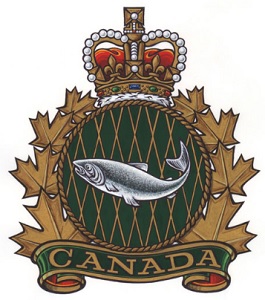
Scientists Level New Critiques of Fisheries and Oceans Canada’s Scientific Rigor
Twenty-five years ago, after the collapse of the Atlantic cod fishery, Jeffrey Hutchings, a preeminent fisheries scientist and professor at Dalhousie University in Nova Scotia, sounded the alarm that Canada’s federal fisheries department was allowing “nonscience influences” in critical decision-making. Writing at the time, he said, “There is a clear and immediate need for Canadians to examine very seriously the role of bureaucrats and politicians in the management of Canada’s natural resources.” Today, a new crop of researchers is once again imploring Fisheries and Oceans Canada (DFO) to change its ways. At the core of their concerns is a number of systemic and structural ways in which DFO gathers, parses, and handles scientific information, and how that advice is passed on to decision-makers. >click to read< 09:20

Fishing chief says wind projects bring ‘new challenges’ for Scottish fleet
The fishing industry has a key role to play in the energy transition amid a “spatial squeeze” in Scottish waters. That was the message from Elspeth Macdonald, chief executive of the Scottish Fishermen’s Federation,,, Ms Macdonald said fishers faced competition for territory from a range of other sectors, including aquaculture, oil and gas, and marine renewables. Marine protected areas are also a limiting factor on fishing opportunities, she added. And sea space is about to be “squeezed” even more by a raft of offshore wind energy developments as Scotland pursues its net-zero carbon emissions targets,,, >click to read< 11:36
Electronic Monitoring: Who Gets to Use Our Oceans?
Much of the current effort to create coordinated planning for use of our oceans started in 2010, when President Obama issued an executive order that called for the development of “coastal and marine spatial plans.” The idea is to figure out where to put things like aquaculture and wind farms without harming other things such as fisheries. In early August, the ASMFC announced that it’s considering a plan to require electronic tracking devices on federally permitted vessels that operate in American lobster and Jonah crab fisheries. Most of the lobster fishermen to be impacted are in Maine, and while they’ve expected the tracking plan to go into motion for some time now, Porter says, “there will be some seriously pissed-off lobstermen when this actually hits the ground.” >click to read< 09:21

Protect Maine’s Fishing Heritage Foundation is working to limit Maine’s aquaculture lease process.
With aquaculture growing, one organization is concerned about continued conflict on the coastline. Protect Maine’s Fishing Heritage Foundation was established two years ago. Executive Director of the non-profit, Cyrstal Canney said her group is fighting to reduce the size and amount of aquaculture leases. Canney did add her organization is not against aquaculture but wants to protect traditional fishing grounds. >click to read< 08:48

Pure Salmon to invest $228 million in Southwest Virginia
Pure Salmon will invest about $228 million in Southwest Virginia, which is one of the largest private capital investments in the area’s history, according to officials in Russell, Buchanan, and Tazewell counties. The construction of “Project Jonah” will be the world’s “largest vertically integrated indoor aquaculture facility.” The facility will raise and process up to 20,000 tons of salmon annually. >click to read< 12:51

Large Scale Fin-Fish and Aquatic Farms Could Hamper Maine Aquaculture Industry
As proposed, the Nordic Aquafarms project would raise more than 72 million pounds of salmon annually on its 56–acre campus in Belfast, Maine. The site would utilize about 5,200 gallons of water per minute, a combination of both saltwater taken from the nearby Gulf of Maine and freshwater obtained from groundwater wells, city-owned aquifers and reservoirs. The permit application indicates the facility would discharge more than 7 million gallons of filtered wastewater into the Belfast Bay each day. It’s that last figure that concerns many local residents. Marsden Brewer is a commercial fisherman and scallop farmer who also serves as president of the Maine Aquaculture Co-op. Brewer was one of more than a dozen fishermen and fish farmers who spoke out against the Nordic project at a statewide hearing this spring. “After years of misuse, we’re finally starting to see a lot of good things happening in this bay,” Brewer says. >click to read< 09:56
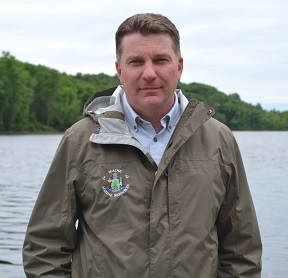
An Update from Commissioner Keliher
Dear Industry Member, I’m reaching to share what’s been happening recently at DMR. It’s been a busy summer. CARES Act – Negotiations with NOAA on our CARES Act spend plan have finally been completed.,, Soon, we will be reaching out to you by mail and email with information on the application process. USDA Trade Relief, Federal Whale Rules, Aquaculture, Marine Patrol, and more. Like I said, it’s been a busy summer. But, despite the ongoing challenges of Covid-19 we have established remote operations and the work continues. We will keep sending these updates until we can gather in-person. Until then, stay safe. Pat. >click to read< 12:21

Presidential order on aquaculture draws environmental concerns over proposed fish farm, like pollution and escapements?
The federal waters of the contiguous United States are free of aquaculture farms, but a new executive order from President Donald Trump could hasten attempts by fish farm companies to take the plunge. Southwest Florida could be at the forefront of the push for more farms as a pilot program works through a permitting process. Environmental groups worry the order will greenlight offshore operations, creating concentrated sources of pollution and putting wild species at risk. The executive order on Promoting American Seafood Competitiveness and Economic Growth was signed May 7,,, Ocean Era, formerly Kampachi Farms, is waiting on permits for its pilot finfish farm, Velella Epsilon. The farm will be about 41 miles southwest of Sarasota in the Gulf of Mexico and raise 88,000 pounds of almaco jack fish each year. >click to read< 10:45

LETTER: ‘World class’ means something different in Newfoundland and Labrador. Smoke and Mirrors!
Here in Newfoundland and Labrador we routinely hear politicians and private industry speak of the “world class” qualities of whatever they are promoting. Whether it is megaprojects, various standards or qualities of whatever public or private business is involved — or just about anything it seems — our cup runs over with world class items. Here are a few examples: “The Muskrat Falls project is world class”; “The salmon aquaculture industry in Newfoundland and Labrador is world class” and recently, the new rules touted by our provincial government to regulate the aquaculture industry here are described as “surpassing the world as the place of best practise for aquaculture.” From the now six-week unfolding of the massive Fortune Bay farmed salmon die off,,, by David Downton >click to read< 09:33

Aquaculture, lobstering tussle headed to Maine statehouse
Democratic state Sen. David Miramant, of Camden, is proposing a bill that would make approval criteria for new aquaculture leases stricter. Miramant’s bill would require new lease applicants to demonstrate that no practical alternative exists that would have less of an impact on existing uses. The proposal would also reduce the maximum lease acreage a person can hold from 1,000 acres to 50 acres. The proposal comes as some lobstermen are sounding the alarm that the increase in fish and shellfish farming in Maine’s waters could limit their ability to lay traps. >click to read< 13:04

Leo White: Comparing open-net to recirculatory fish farming
In his letter, Cyr Couturier claims that open-net pen (ONP) aquaculture is alive and well in Newfoundland and Labrador and everywhere else. Nothing could be further from the truth.,,, In Norway, the birthplace of ONP technology, it is not possible to even get a licence to establish a new salmon aquaculture farm.,,,licences for Recirculatory Aquaculture Systems (RAS), which are land-based, are free. Clearly in Norway RAS is seen as the future for farming Atlantic salmon. Meanwhile in N.L., access fees are negligible and salmon farmers pay nothing for the incredible damage and pollution they create. >click to read< 11:36

Aquaculture poses threat to the lobster industry
As president of the Maine Lobstering Union, I know we have struggled with several concerns this summer from right whales to bait shortages to aquaculture leases. We need to take steps now to fix rules and regulations around aquaculture. If we don’t, it will encroach on ocean space for everyone. The lease sizes have gotten so large we are making Maine’s oceans attractive to out-of-state corporations. By Rock Alley >click to read< 11:40

Wasted – Our global food system discards 46 million tonnes of fish each year. Why?
From the moment a fisher lands a fish to the moment that fish lands on your plate, 27 percent of it will disappear.,,,It may surprise you, then, to learn that the Seafood Expo North America in Boston, Massachusetts, the largest gathering of the seafood industry in North America, does not stink. Not really. It smells of cleaned carpet and newly printed brochures and freshly scrubbed businesspeople, of men in ironed shirts and women with flat-ironed hair.,,, Around 22,000 people come from 50 countries to buy, sell, and market every consumable marine product imaginable. >click to read< 13:36

Tomorrow’s fishery
While fisheries biologists in the north are hard at work crunching numbers in an effort to develop their best guess at how many salmon will return to Alaska next year, Atlantic Sapphire is getting ready to load it first 800,000 salmon eggs into a massive, onshore “Bluehouse” in Florida. A “successful 90-day, on site hatchery trial has validated water quality and local conditions,” the Norwegian company said in a report to shareholders in mid-November.,,, The implications for Alaska commercial salmon fisheries are significant, but those who suggest the growing competition warrants some serious discussion as to how the 49th state retains value in its salmon resources are generally vilified as commercial fishery haters. >click to read<12:27

Regrets of a Salmon Farmer – Swimming in Circles: Aquaculture and the End of Wild Oceans
Salmon farming is huge business, dominated by a single company in the U.S. The fish are fed toxic feed, laced with multiple troubling chemicals. Under these circumstances, they are vulnerable to disease and parasites, including sea lice, and surrounding wild sea animals are infected as well. The current industry response is to pour increasingly toxic pesticides into the ocean. Ocean salmon aquaculture, as it is currently practiced, eventually makes the area surrounding the fishery uninhabitable, and the fishery must either shut down or move. Avoid farmed fish for your health, the ocean, and all of the creatures in it. >click to read<

Defenders of right whales pursue limits on aquaculture and fixed gear fisheries
Right whale defenders are now taking aim at aquaculture as they try to protect the highly endangered species from deadly fishing gear entanglements. Advocates usually focus on the lobster industry,,,Right whale defenders are now taking aim at aquaculture as they try to protect the highly endangered species from deadly fishing gear entanglements. Advocates usually focus on the lobster industry,,, Researchers from Whale and Dolphin Conservation, a U.K.-based nonprofit that advocates for marine animals, want regulators to reduce surface-to-seabed lines in all Gulf of Maine fisheries, not just lobstering. They name aquaculture and gill net as rope-based fishing methods that are known to entrap, injure and kill both humpback and right whales. They say it’s not fair for regulators, who are meeting next week, to seek rope reduction from lobstermen while issuing permits for other fisheries that use similar rope. >click to read<20:40

The AQUAA Act – Wicker Introduces Bill to Advance American Aquaculture
U.S. Senator Roger Wicker, R-Miss., today introduced the “Advancing the Quality and Understanding of American Aquaculture (AQUAA) Act.” The legislation would streamline the permitting process for aquaculture farms in federal waters, and fund research and development to advance the aquaculture industry.,,, The AQUAA Act would establish an Office of Marine Aquaculture within the National Oceanic and Atmospheric Administration (NOAA), which would be charged with coordinating the federal permitting process. Additionally, a permit would be established through NOAA that would give an individual the security of tenure necessary to secure financing for an aquaculture operation. >click to read<17:04

Promising results from UK lobster hatchery
Set up primarily to support the local lobster-fishing industry, the National Lobster Hatchery (NLH) concentrates on hatching eggs from gravid females caught by local fishermen, keeping them within the safety of the hatchery during their vulnerable larval phase, before releasing them – as comparatively robust juveniles – back into the seas around Cornwall and the Isles of Scilly. However, the researchers have since been experimenting with on-growing these juveniles for longer – and to larger sizes – in a number of different sea-based systems. They hope that this ecological conditioning will not only help to improve the survival of those lobsters that they release back into the wild,,,, click here to read the story 08:05
Is There a Better Way to Farm Fish?
 Aquaculture is a huge industry. In 2014, for the first time, more than half of all seafood consumed by humans came from fish farms, with salmon among the most farmed species. But aquaculture is also contentious — in large part because of the problems with existing open-net pens. Yet Jeremy Dunn, executive director of the BC Salmon Farmers Association, says the industry is already starting to move away from open-net pens. While Dunn says 90 per cent of new investment globally is in variations on the technology, leading salmon-farming countries such as Norway are investing in hitherto unfeasible technologies, such as land-based tanks and recirculating aquaculture systems. click here to read the story 10:54
Aquaculture is a huge industry. In 2014, for the first time, more than half of all seafood consumed by humans came from fish farms, with salmon among the most farmed species. But aquaculture is also contentious — in large part because of the problems with existing open-net pens. Yet Jeremy Dunn, executive director of the BC Salmon Farmers Association, says the industry is already starting to move away from open-net pens. While Dunn says 90 per cent of new investment globally is in variations on the technology, leading salmon-farming countries such as Norway are investing in hitherto unfeasible technologies, such as land-based tanks and recirculating aquaculture systems. click here to read the story 10:54
Save wild salmon, support Bill C-228
 Early this year, Bill C-228 – a private member’s bill, was introduced to amend the Fisheries Act (closed containment aquaculture) to require finfish aquaculture for commercial purposes, in Canadian fisheries’ waters off the Pacific Coast, be carried out in closed-containment facilities. It also requires the Minister of Fisheries and Oceans to prepare, table in Parliament and implement a plan, to support the transition to the use of closed containment facilities, and to protect the jobs and financial security of workers in that sector. Click here to read Bill C-228 The bill is expected to go to second reading in the House of Commons this fall. Show your support for Bill C-228. Add your name to the e-petition. Link 08:55
Early this year, Bill C-228 – a private member’s bill, was introduced to amend the Fisheries Act (closed containment aquaculture) to require finfish aquaculture for commercial purposes, in Canadian fisheries’ waters off the Pacific Coast, be carried out in closed-containment facilities. It also requires the Minister of Fisheries and Oceans to prepare, table in Parliament and implement a plan, to support the transition to the use of closed containment facilities, and to protect the jobs and financial security of workers in that sector. Click here to read Bill C-228 The bill is expected to go to second reading in the House of Commons this fall. Show your support for Bill C-228. Add your name to the e-petition. Link 08:55
Hybridization – Escaped farmed salmon are breeding with wild salmon and producing offspring
 Research has confirmed that escaped farmed salmon are breeding with wild salmon and producing offspring in many rivers in Newfoundland. “We did find evidence of successful breeding between farmed and wild salmon. Approximately a third of the individuals we sampled showed evidence of hybrid ancestry,” said Department of Fisheries and Oceans scientist Ian Bradbury, of the unpublished study presented at an international aquaculture conference in St. John’s on Tuesday. Researchers studied thousands of fish in 18 rivers on the island’s south coast, and found evidence of interbreeding in 17 of them. “It was widespread across a suite of the rivers that we looked at. I think there was only one river where we didn’t see evidence of hybridization,” said Bradbury. It’s estimated that over the decades since the advent of aquaculture, more than 750,000 salmon have escaped from fish farms in the province. The new study sheds light on what happens to them in the wild. Read the story here 11:26
Research has confirmed that escaped farmed salmon are breeding with wild salmon and producing offspring in many rivers in Newfoundland. “We did find evidence of successful breeding between farmed and wild salmon. Approximately a third of the individuals we sampled showed evidence of hybrid ancestry,” said Department of Fisheries and Oceans scientist Ian Bradbury, of the unpublished study presented at an international aquaculture conference in St. John’s on Tuesday. Researchers studied thousands of fish in 18 rivers on the island’s south coast, and found evidence of interbreeding in 17 of them. “It was widespread across a suite of the rivers that we looked at. I think there was only one river where we didn’t see evidence of hybridization,” said Bradbury. It’s estimated that over the decades since the advent of aquaculture, more than 750,000 salmon have escaped from fish farms in the province. The new study sheds light on what happens to them in the wild. Read the story here 11:26
Entangled Humpback rescued from fish farm ropes by fisheries officials
 A juvenile humpback whale was thrashing in the water north of Klemtu, B.C. yesterday for 12 hours, struggling to breathe as ropes from an empty aquaculture site cut into its flesh and blubber. Marine Harvest workers discovered the entangled whale Monday morning and immediately called Fisheries and Oceans Canada, the company said in a statement. Paul Cottrell, DFO’s marine mammal coordinator, caught the first plane from Vancouver to conduct the complicated rescue, with help from local fisheries officers, the company and members of the Kitasoo First Nation. The team needed to cut at least four ropes to free the young whale, but that’s not as quick and easy as it sounds. Video, read the rest here 09:52
A juvenile humpback whale was thrashing in the water north of Klemtu, B.C. yesterday for 12 hours, struggling to breathe as ropes from an empty aquaculture site cut into its flesh and blubber. Marine Harvest workers discovered the entangled whale Monday morning and immediately called Fisheries and Oceans Canada, the company said in a statement. Paul Cottrell, DFO’s marine mammal coordinator, caught the first plane from Vancouver to conduct the complicated rescue, with help from local fisheries officers, the company and members of the Kitasoo First Nation. The team needed to cut at least four ropes to free the young whale, but that’s not as quick and easy as it sounds. Video, read the rest here 09:52

Meanwhile, in Tasmania – Drag fish farm regulation into 21st century
Sea based fish farms dump tonnes of faeces into the water. Think of them as a large toilet that does not flush. I cannot think of an industry in Tasmania other than aquaculture that is allowed to dump an unlimited amount of pollution in our waterways. Not only is there no limit on the amount of faeces salmon farms can dump in coastal waters, Tasmania also lacks science-based regulations to determine which parts of our coastline are suitable for salmon farms. International research shows that if you put fish farms in bays and harbours, where the water is shallow and current speed is low, fish faeces accumulates under cages, killing everything below them. Nitrogen discharged into the water column creates risk of harmful algal blooms, like the types we have seen worsening with increased salmon farms in the Huon and D’Entrecasteaux Channel. Other countries have responded to this research by offering incentives to move farming onshore. Read the story here 12:46
A renewed aquaculture lease for Kelly Cove Salmon stirs up Shelburne Harbour neighbours
 A renewed aquaculture lease for Kelly Cove Salmon in Shelburne Harbour is raising local ire before the first fish is in the water. The Nova Scotia Department of Fisheries and Aquaculture has set an August 19 deadline for public comment on lease 0602, a 10-year licence and 20-year lease for a 20-hectare suspended cage cultivation of Atlantic salmon and rainbow trout. Shelly Hipson lives in the nearby village of Atlantic and she has a laundry list of objections to the Sandy Point site, including the size of the 0602 farm. Hipson cites concerns for the local lobster industry, and a February 2014 letter to the province from the Conservation Council of New Brunswick that found part of the harbour floor in the area was essentially dead. “Where do we think that’s going, excrement from a million fish? If my septic was running out into the harbour I’d be charged,” Hipson said. Read the story here 12:25
A renewed aquaculture lease for Kelly Cove Salmon in Shelburne Harbour is raising local ire before the first fish is in the water. The Nova Scotia Department of Fisheries and Aquaculture has set an August 19 deadline for public comment on lease 0602, a 10-year licence and 20-year lease for a 20-hectare suspended cage cultivation of Atlantic salmon and rainbow trout. Shelly Hipson lives in the nearby village of Atlantic and she has a laundry list of objections to the Sandy Point site, including the size of the 0602 farm. Hipson cites concerns for the local lobster industry, and a February 2014 letter to the province from the Conservation Council of New Brunswick that found part of the harbour floor in the area was essentially dead. “Where do we think that’s going, excrement from a million fish? If my septic was running out into the harbour I’d be charged,” Hipson said. Read the story here 12:25
NMFS – Gulf of Mexico rule opens the door for seafood farming in the open ocean
Plenty of feel good NOAA propaganda! – .jpg) NOAA filed a final rule today implementing the nation’s first comprehensive regulatory program for aquaculture in federal waters. The groundbreaking rule creates a coordinated permitting system for the Gulf of Mexico, opening the door for the region to expand seafood production and create new jobs in an environmentally sustainable manner. “As demand for seafood continues to rise, aquaculture presents a tremendous opportunity not only to meet this demand, but also to increase opportunities for the seafood industry and job creation,” said Kathryn Sullivan, Ph.D., NOAA administrator. Read the rest here 13:30
NOAA filed a final rule today implementing the nation’s first comprehensive regulatory program for aquaculture in federal waters. The groundbreaking rule creates a coordinated permitting system for the Gulf of Mexico, opening the door for the region to expand seafood production and create new jobs in an environmentally sustainable manner. “As demand for seafood continues to rise, aquaculture presents a tremendous opportunity not only to meet this demand, but also to increase opportunities for the seafood industry and job creation,” said Kathryn Sullivan, Ph.D., NOAA administrator. Read the rest here 13:30






 Large offshore wind turbines are made primarily of steel. When exposed to salt water, steel corrodes over time, leading to structural damage. To prevent this, offshore wind farm developers use corrosion protection systems. One of the most common methods involves attaching sacrificial anodes to the turbines. These metal blocks, mainly composed of aluminium, zinc and indium, dissolve into the seawater to protect the steel structure. The research team at the University of Portsmouth set out to quantify how much metal is being released from corrosion protection systems used in European offshore wind farms. Their findings suggest that the accumulation of these metals in the ocean could have long-term consequences for marine ecosystems, with particular concern over the potential to enter food chains. Photos,
Large offshore wind turbines are made primarily of steel. When exposed to salt water, steel corrodes over time, leading to structural damage. To prevent this, offshore wind farm developers use corrosion protection systems. One of the most common methods involves attaching sacrificial anodes to the turbines. These metal blocks, mainly composed of aluminium, zinc and indium, dissolve into the seawater to protect the steel structure. The research team at the University of Portsmouth set out to quantify how much metal is being released from corrosion protection systems used in European offshore wind farms. Their findings suggest that the accumulation of these metals in the ocean could have long-term consequences for marine ecosystems, with particular concern over the potential to enter food chains. Photos, 